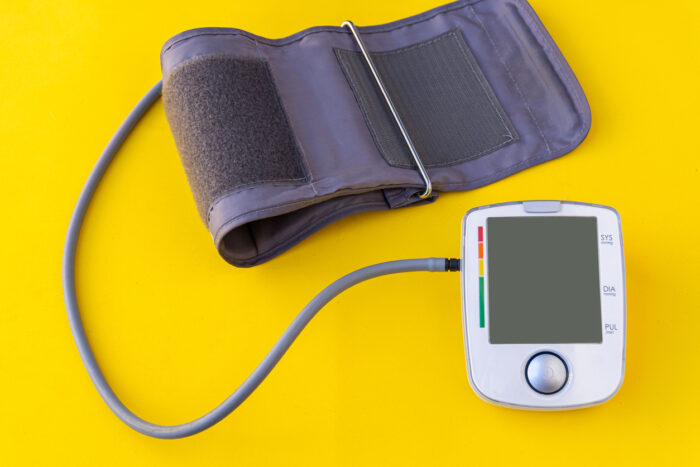
A diagnosis of type 2 diabetes can be confusing, upsetting and a bit overwhelming. You probably have lots of questions: How did I get it? What does it mean? What do I do now?
What is it type 2 diabetes?
Type 2 diabetes is the most common form of diabetes. It starts with a problem called insulin resistance. This is where the body doesn’t respond properly to a hormone called insulin that helps keep your blood sugar level balanced. With type 2 diabetes the body either doesn’t produce enough insulin or the cells don’t detect it. Inability to use insulin properly means glucose (the simplest form of sugar) doesn’t get absorbed into cells where it is needed for energy, but stays in the blood. So, blood sugar levels rise, eventually developing into pre-diabetes, and then into type 2 diabetes.
For most people this is a gradual progression over many years but, unfortunately, it is often not diagnosed until the later stages when blood sugar levels have already been elevated for some time.
Who gets type 2 diabetes?
Typically type 2 diabetes develops after the ages of 30 to 40 years. Carrying extra weight, particularly around the middle, is a significant risk factor for type 2 diabetes, but genetics also play a big part. This means some people who are carrying extra weight won’t develop diabetes, while others, who are lean, might. Having high blood pressure is a risk factor and belonging to Maori, Pacific Islander, Middle Eastern or Asian ethnicities increases your likelihood. It’s the interaction between our genes and our lifestyle that influences the development of type 2 diabetes. Those who are genetically at risk don’t fare well with our Western lifestyle.

Having high blood pressure is another risk factor for type II diabetes
Why is type 2 diabetes a problem?
The main problem with diabetes is the damage to blood vessels that occurs when your blood sugar levels remain high for long periods of time. This can lead to heart disease, kidney disease, eye damage and circulation problems.
With lifestyle changes and the addition of medication, when needed, the risk of developing these complications can be avoided or significantly reduced. Early diagnosis and maintaining good control of blood sugar levels, cholesterol and blood pressure is the key.
Can you have ‘mild’ diabetes?
Some people with type 2 diabetes, who are not taking medication, think of their diabetes as ‘mild’ or less serious but, unfortunately, this is not really the case. The reality is, if blood sugar levels aren’t kept on track and the body is buffeted by persistently high levels, even if only mildly above the normal range, then complications may develop.
We also know type 2 diabetes is a progressive illness so, over time, people usually progress to needing tablets and then insulin.
Taking diabetes seriously from the start, including putting the right lifestyle changes in place and adding medication, when needed, will help to slow the progression and reduce the chances of developing complications.
Furthermore, some people’s glucose levels can return to the normal range with around 10% body weight loss. This is termed ‘diabetes remission’. Diabetes is not cured as if you have had diabetes, you are always at risk of developing it again, but glucose levels can be brought to the normal range without the need for medication and this will also minimise your risk of complications.
Did you know?
For every person diagnosed, it’s estimated there’s another unaware they have diabetes.
For people with pre-diabetes, Changes to diet and exercise can reduce their risk of developing diabetes by 60 per cent.

Insulin is a hormone regulated by your pancreas that keeps blood sugars in check.
Diabetes basics: What you need to know
What is insulin?
Located behind the stomach, the pancreas is an organ which has two different functions: it produces pancreatic juice used in digestion in the small intestine and it produces a number of hormones, one of which is insulin.
One of insulin’s roles is to reduce blood glucose. After a meal containing carbohydrate, insulin is released into the blood to help transport glucose from the bloodstream into other cells where it can be used or stored as energy. Between meals the liver produces glucose with the aim of keeping blood glucose at a desirable level. Insulin is used to signal the liver to stop production when the level is high enough. If the body is unable to produce enough insulin, or it becomes resistant to the insulin produced, blood glucose levels can get out of control.
What is the difference between type 1 and type 2 diabetes?
These are two very different types of diabetes.
Type 1 accounts for less than 10 per cent of diabetes and is where insulin-producing cells in the pancreas are destroyed, so that the pancreas does not produce any (or only very little) insulin. It is commonly diagnosed in children but can occur at any age and people with type 1 diabetes will need insulin injections for life.
Type 2 is much more common and accounts for nearly 90 per cent of all diabetes. We are presently experiencing a huge increase in cases. In type 2 diabetes body cells become resistant to insulin and insulin production becomes inadequate. Contributing factors include being overweight, having a family history of type 2 diabetes, having a sedentary lifestyle and increasing age. It is treated initially with healthy eating and exercise. Medications may be needed if blood glucose levels cannot be kept within the normal range.
Can you reverse type 2 diabetes?
Type 2 diabetes cannot be reversed but the right diet, exercise and weight-loss can make blood glucose control easier. In fact, in over 50 per cent of people, blood glucose levels can be normalised by:
• following a kilojoule-controlled diet
• increasing physical activity
• losing some weight.
Doing these things may put you into ‘diabetes remission’ – refer to ‘Can you have mild diabetes?’ above for more on this.
What about pre-diabetes?
Pre-diabetes is a condition where cells in the body are becoming insulin resistant and inadequate insulin is being produced by the pancreas such that the blood glucose levels are higher than they should be, but are not high enough to be classified as diabetes. For those diagnosed with pre-diabetes, taking steps to improve insulin resistance, such as eating a healthy and balanced diet, losing weight and participating in regular physical activity, may be enough to avoid ever being diagnosed with type 2 diabetes.

Regular exercise and a consistent healthy diet can help manage Type II diabetes
Type II FAQs
I have recently been diagnosed – will it get worse and will I have to inject myself with insulin?
Type 2 diabetes is a progressive disease. As you get older there is a probability you will eventually have to take medication to control your blood glucose and you may eventually require insulin injections.
The good news is that keeping well, good glucose control and a healthy lifestyle have proven to be effective in delaying this process.
What’s the link with being overweight?
There are many risk factors for diabetes and being overweight is an important one, particularly if you are prone to gain weight in your abdominal area. If you are overweight, losing weight will ensure that your diabetes is better managed and will have many other beneficial effects on your health such as reducing your risk of heart disease.
What will happen if I don’t start controlling my diabetes?
Unfortunately, one of the major problems with diabetes is that after a period of time, if blood glucose levels are not well controlled, the body’s blood vessels can be damaged, particularly the large blood vessels of the heart, brain and legs and the very tiny blood vessels and capillaries that supply the eyes, kidneys and nerves.
These lead to the classic complications of diabetes including poor blood circulation and numbness of feet, heart disease, blindness and kidney failure, all needing to be carefully managed.
What is hypoglycaemia?
This is when blood glucose falls below the normal level. It can occur when people are on medication or insulin to reduce blood glucose. There are several warning signs such as feeling dizzy, faint or sweating.
Treatment is by taking some form of fast acting sugar, eg, glucose tablets, which raise the blood glucose levels rapidly. This is followed by a sandwich or meal to ensure the level doesn’t drop. It is important to take note of the cause of each episode, so you can avoid it happening again.
www.healthyfood.com











